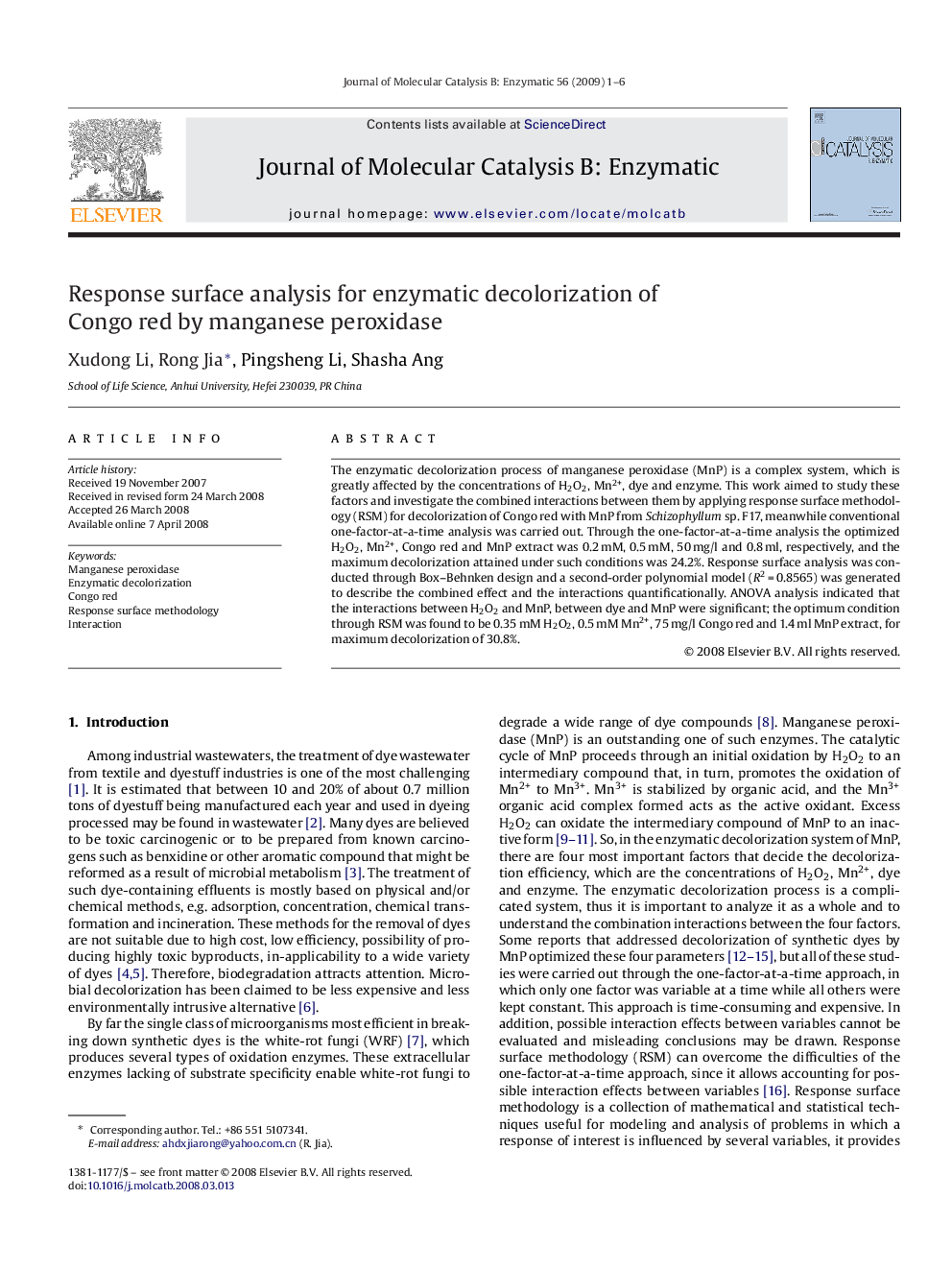| Article ID | Journal | Published Year | Pages | File Type |
|---|---|---|---|---|
| 70719 | Journal of Molecular Catalysis B: Enzymatic | 2009 | 6 Pages |
The enzymatic decolorization process of manganese peroxidase (MnP) is a complex system, which is greatly affected by the concentrations of H2O2, Mn2+, dye and enzyme. This work aimed to study these factors and investigate the combined interactions between them by applying response surface methodology (RSM) for decolorization of Congo red with MnP from Schizophyllum sp. F17, meanwhile conventional one-factor-at-a-time analysis was carried out. Through the one-factor-at-a-time analysis the optimized H2O2, Mn2+, Congo red and MnP extract was 0.2 mM, 0.5 mM, 50 mg/l and 0.8 ml, respectively, and the maximum decolorization attained under such conditions was 24.2%. Response surface analysis was conducted through Box–Behnken design and a second-order polynomial model (R2 = 0.8565) was generated to describe the combined effect and the interactions quantificationally. ANOVA analysis indicated that the interactions between H2O2 and MnP, between dye and MnP were significant; the optimum condition through RSM was found to be 0.35 mM H2O2, 0.5 mM Mn2+, 75 mg/l Congo red and 1.4 ml MnP extract, for maximum decolorization of 30.8%.
